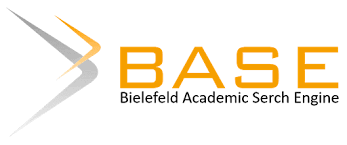TRANSMISI LEGONG DALAM PARADIGMA SEKULARISASI DI BALI
Keywords:
Transmission, Sacred Art, secularization paradigmAbstract
The transmission of legong dance in Bali in this study is a transformation from a ritual (sacred) legong dance to a Balinese-balihan (secular) art. The purpose of this study is to describe and analyze dance transmission as an impact of community development. Research on the transmission of legong dance in the secularization paradigm is to increase people's understanding of art as a cultural heritage inherent in Balinese life, both physically and mentally. This research is very important to do to provide an understanding to the community that the legong dance contains cultural values that can function to shape social attitudes and behavior in accordance with Hindu culture and religion in Bali. The transmission process of the legong dance is one of the efforts to preserve culture, so that the legong dance of cultural heritage does not become extinct. The methodology as the basis for data collection uses qualitative research methods and the analytical tool is the theory of secularization. To understand the existence of the seculararization process, structural functional theory is used. The results of this study indicate that the background of legong in Bali, originally a sacred art as the creativity of devotion in religious ceremonies, has developed into a spectacle art which has implications for the development of various pelegongan creations which have become the attraction for the younger generation, nowadays.
Downloads
References
Bandem, I Made. 1983. Ensiklopedi Tari Bali.Bali: Akademi Seni Tari Indonesia (ASTI) Bali Bali.
Coast, John. 1953.Dancers of Bali. New York: G.P Purnam’s Son.
Eliade, Mircea, 1961, The Sacred and The Profine : The Bature of Region The Significance of Religious Myth, Symbolism, and Ritual Within Life and Culture. Harcourt, Brace Company : United States of America.
Moleong. Metodologi Penelitian Kualitatif. Edisi Revisi. Bandung: RemajaRosdakraya, 2011.
Pardoyo. 1993.Sekularisasi dalam Polemik. Jakarta: P T Pustaka Utama Grafiti.
Ritzer, George-Doglas J Godman.Teori Sosiologi Modern Edisi ke Enam. Jakarta: Kencana Prenada Media Group, 2004.
Ruastiti, Ni Made, 2017, “Membongkar Makna Pertunjukan Sanghyang Dedari di Puri Saren Agung, Ubud, Bali pada Era Global”, dalam Mudra: Jurnal Seni Budaya Volume 32, No.2. Mei 2017. Denpasar: Pusat Penerbitan LP2MPP Institut Seni Indonesia Denpasar
Ruspawati, Wimba Ida Ayu, 2016, “Legong Tombol di Desa Banyuatis, Buleleng, Bali Rekonstruksi dan Regenerasi”, dalam Mudra: Jurnal Seni Budaya Volume 31 No 1. Februari, 2016. Denpasar: Pusat Penerbitan LPPM Instuitut Seni Indonesia Denpasar.
Satori, Djama’an, Aan Komariah. 2010.Metodologi Penelitian Kualitatif. Bandung : Alfabeta.
Seramasara, I Gusti Ngurah, 2018, “Hindu Religion and Tradistion Performing Art In The Development of Pariwisata in Bali”, Lekesan: Interdisciplinary Journal of Asia Pacific Arts Volume 1, Issu 2, October 2018. Denpasar: Indonesia Institut of The Arts Denpasar.
Soedarsono, R.M. 1999. Seni Pertunjukan Indonesia & Pariwisata. Bandung: Masyarakat Seni Pertunjukan Indonesia (MSPI).
Sudewi, I Nyoman. 1993. “ Legong Keraton Sebagai Seni Pertunjukan: Kontinuitas dan Perkembangannya”. Tesis S-2 Program Studi Sejarah. Yogyakarta: Universitas Gadjah Mada.
Downloads
Published
How to Cite
Issue
Section
License
Copyright (c) 2021 LPPM Universitas PGRI Mahadewa Indonesia

This work is licensed under a Creative Commons Attribution-NonCommercial-ShareAlike 4.0 International License.
Hak cipta mencakup hak eksklusif untuk mereproduksi dan mengirimkan artikel ini dalam semua bentuk dan media, termasuk mencetak ulang, memotret, mikrofilm dan reproduksi serupa lainnya, serta terjemahannya. Reproduksi dari bagian manapun dari jurnal ini, penyimpanannya di database dan transmisinya dengan bentuk atau media apa pun, seperti salinan elektronik, elektrostatik dan mekanis, fotokopi, rekaman, media magnetik, dan lain-lain, akan diizinkan hanya dengan izin tertulis dari penerbit jurnal.







1_(1).jpg)











